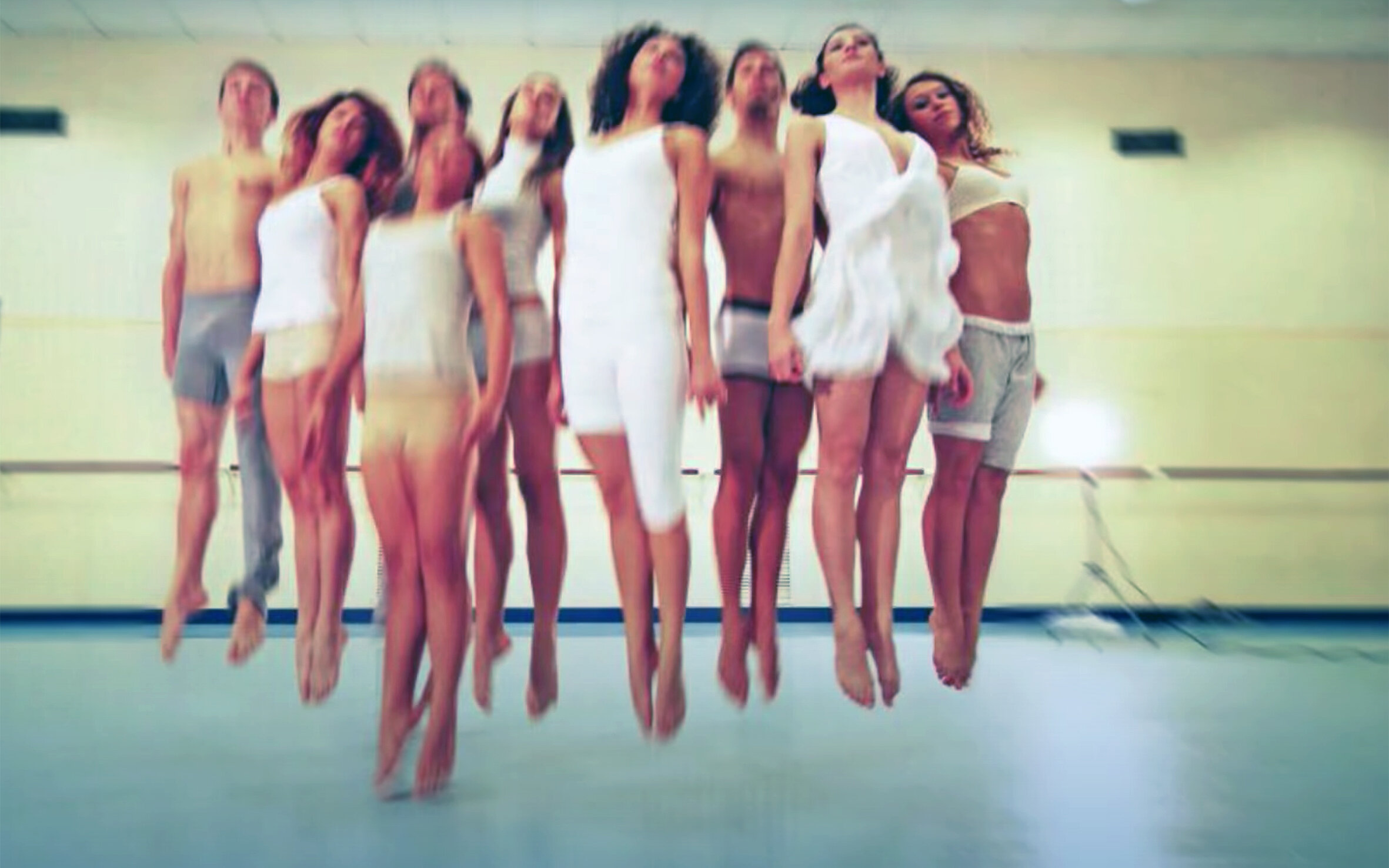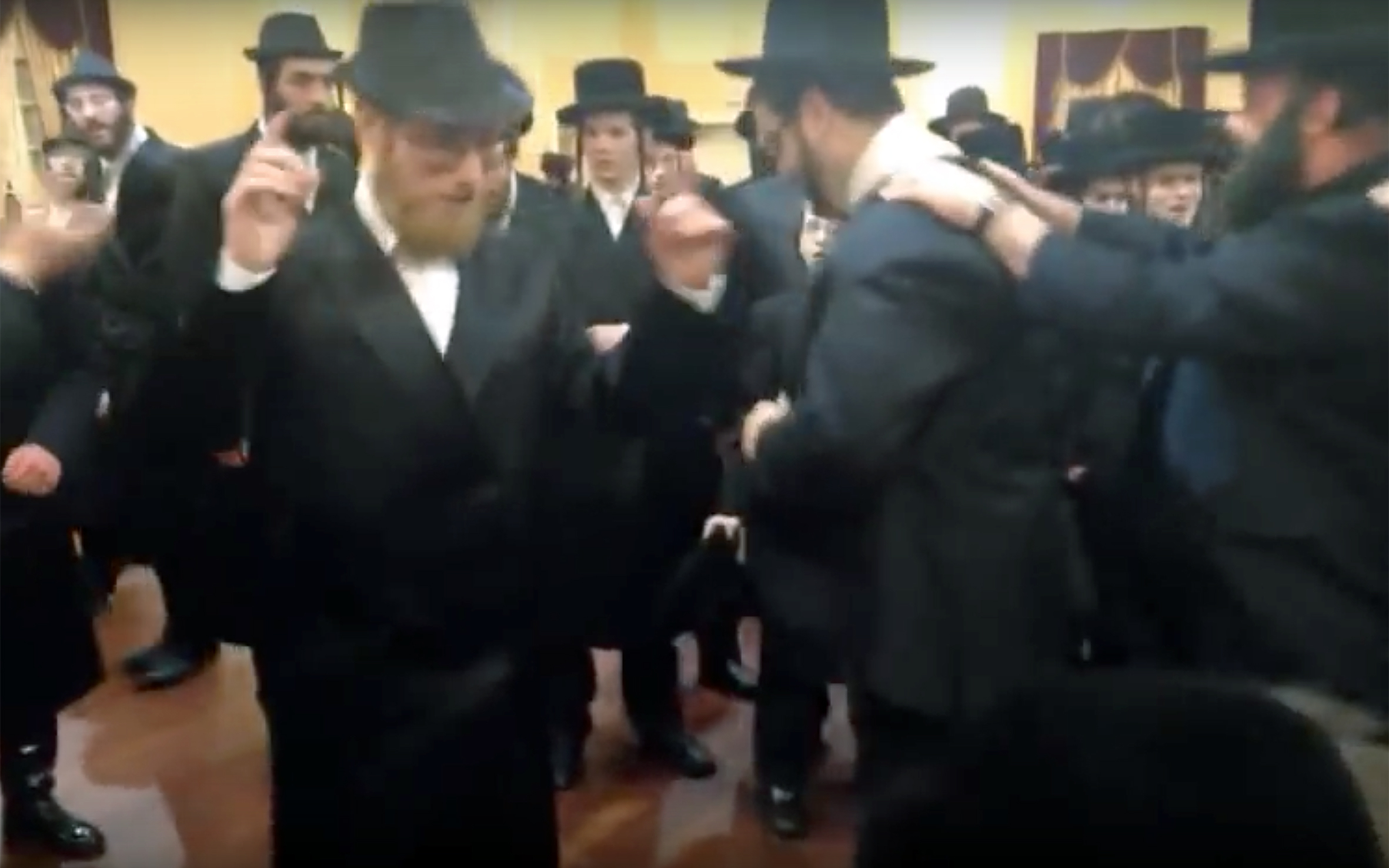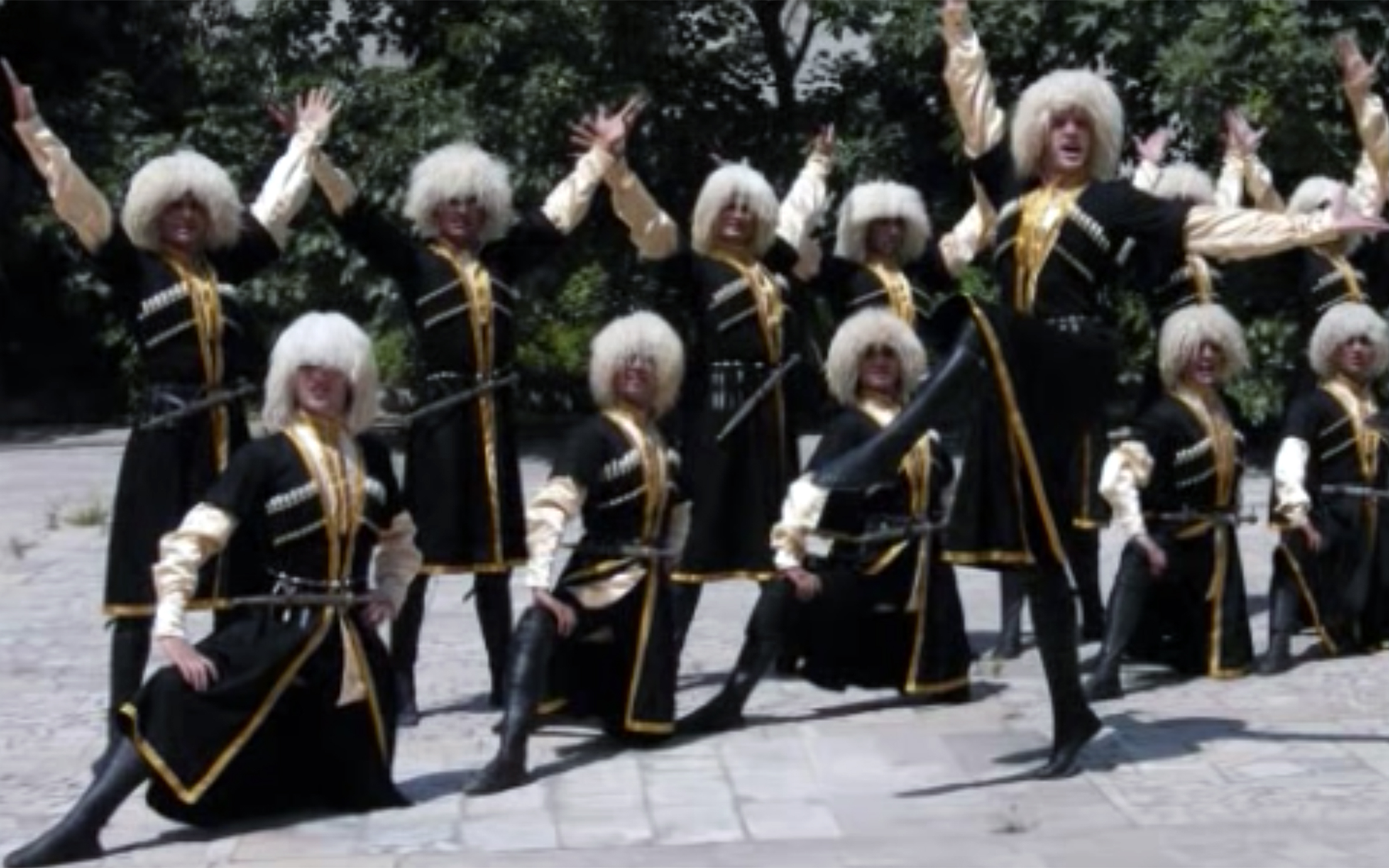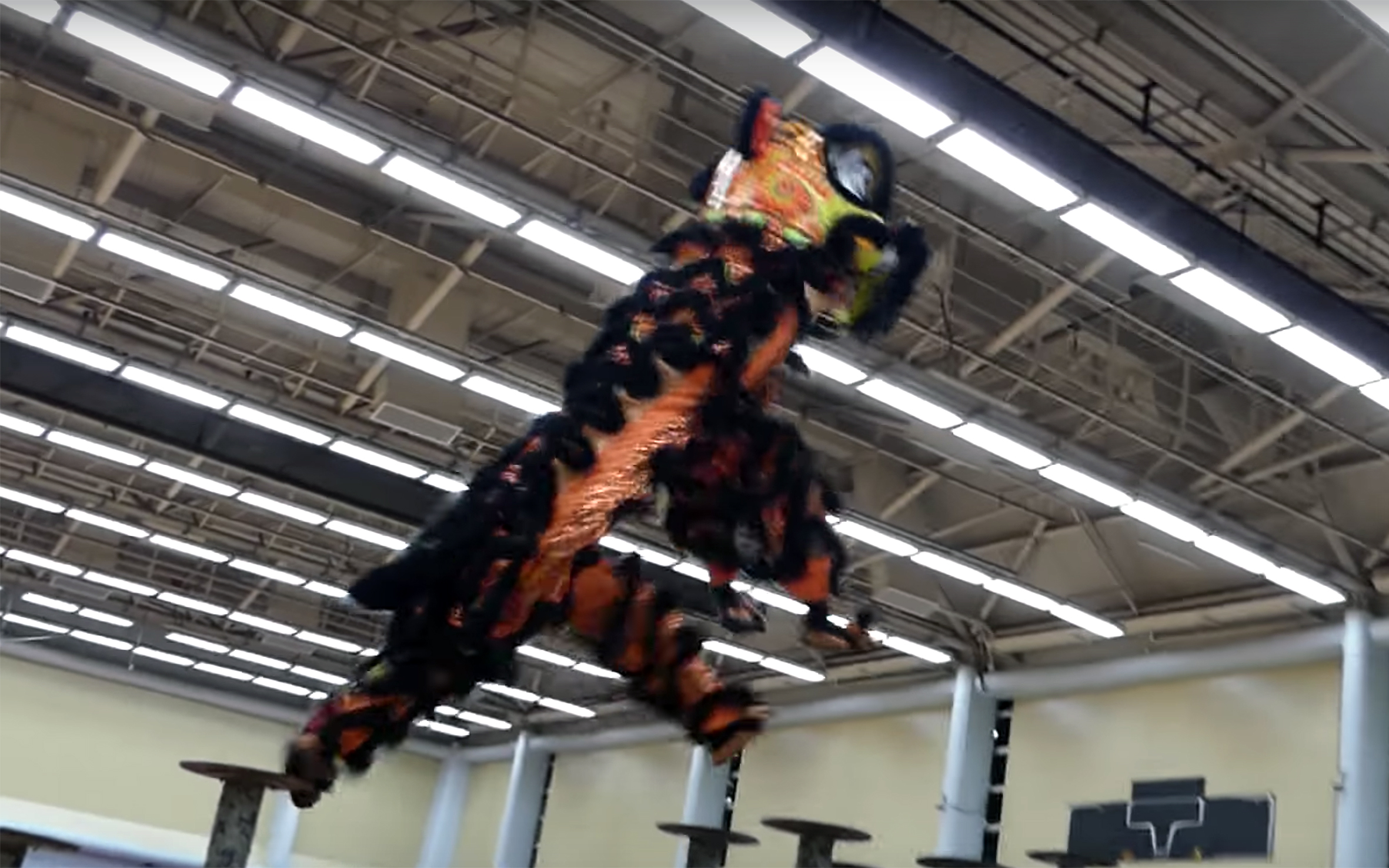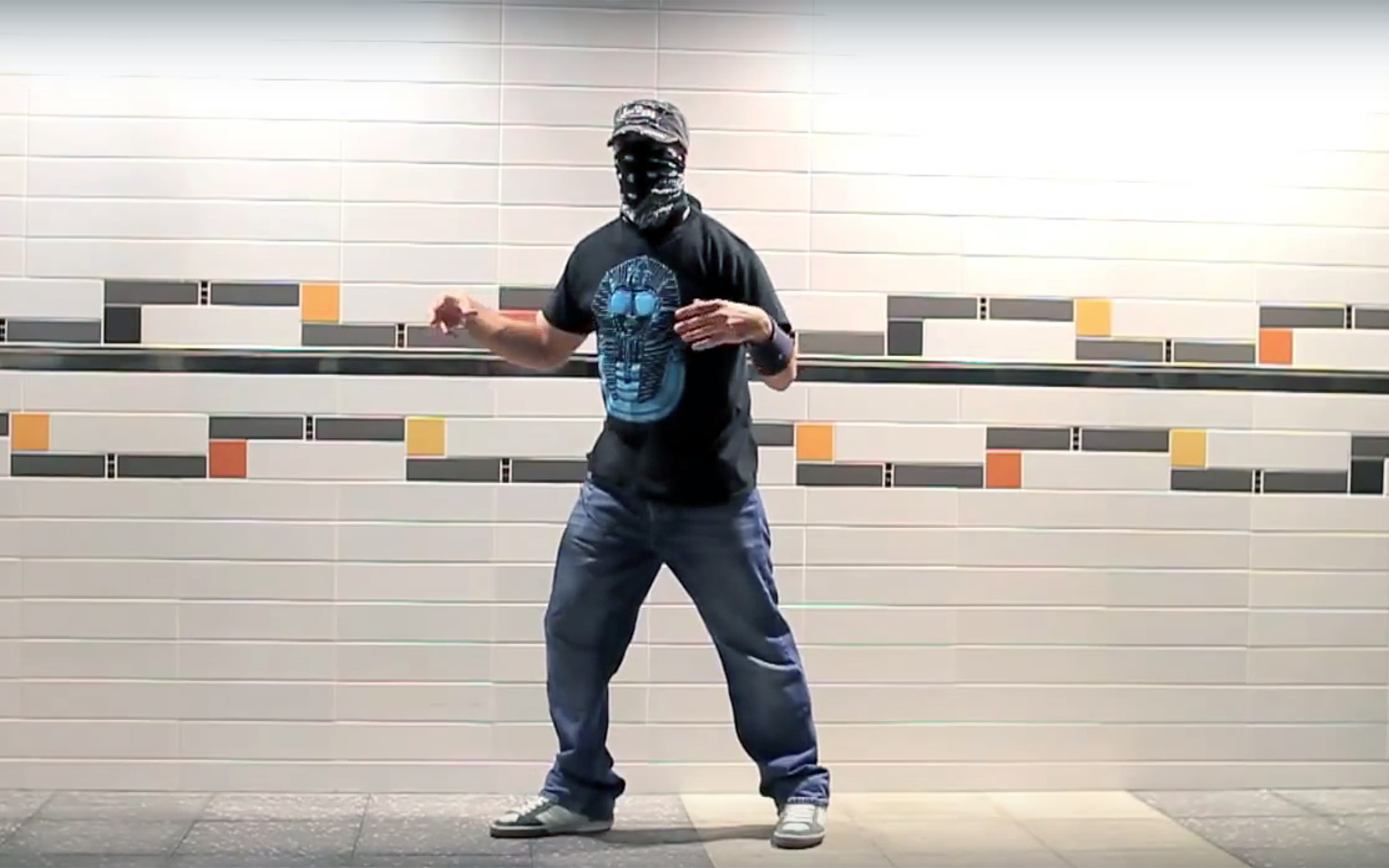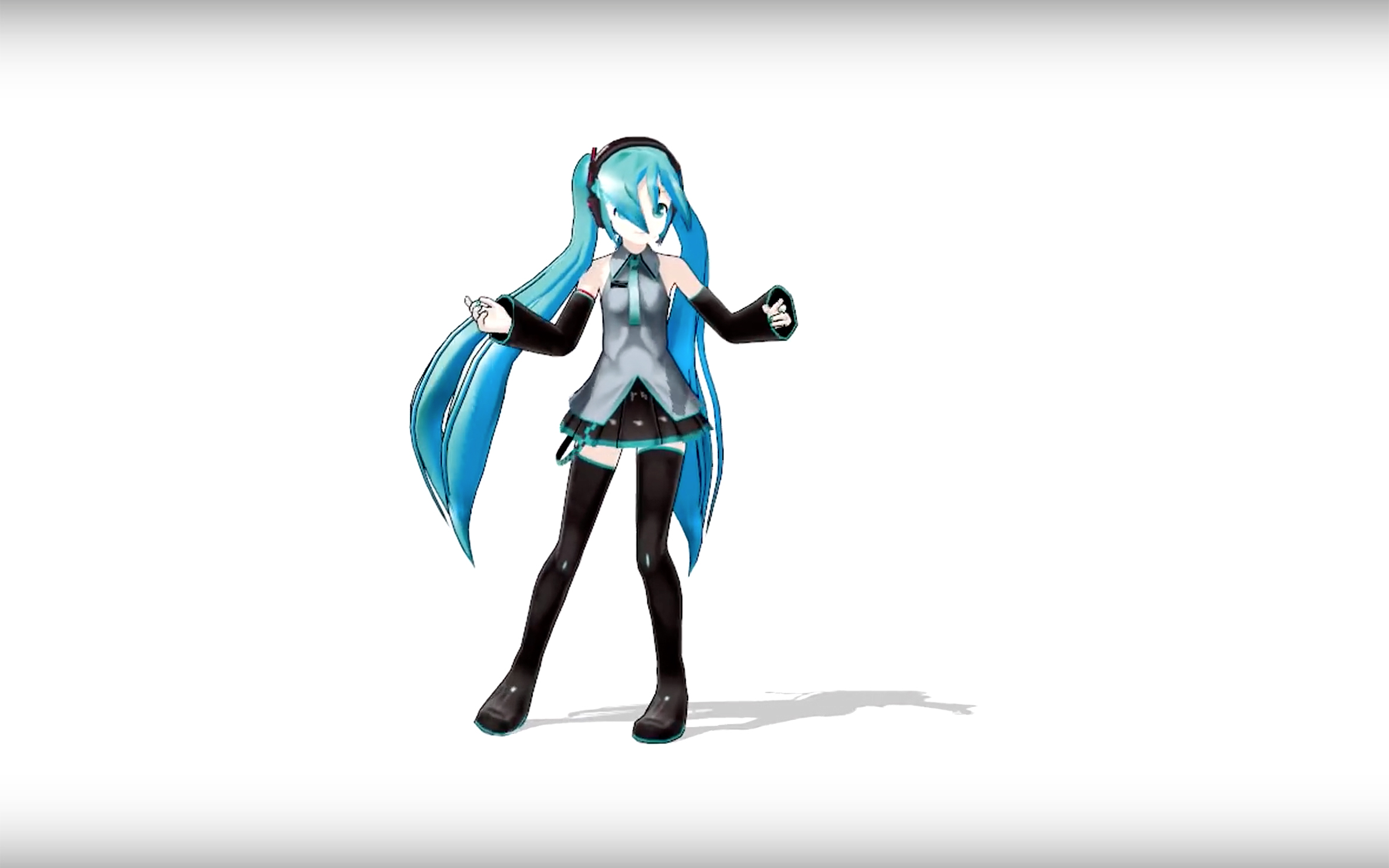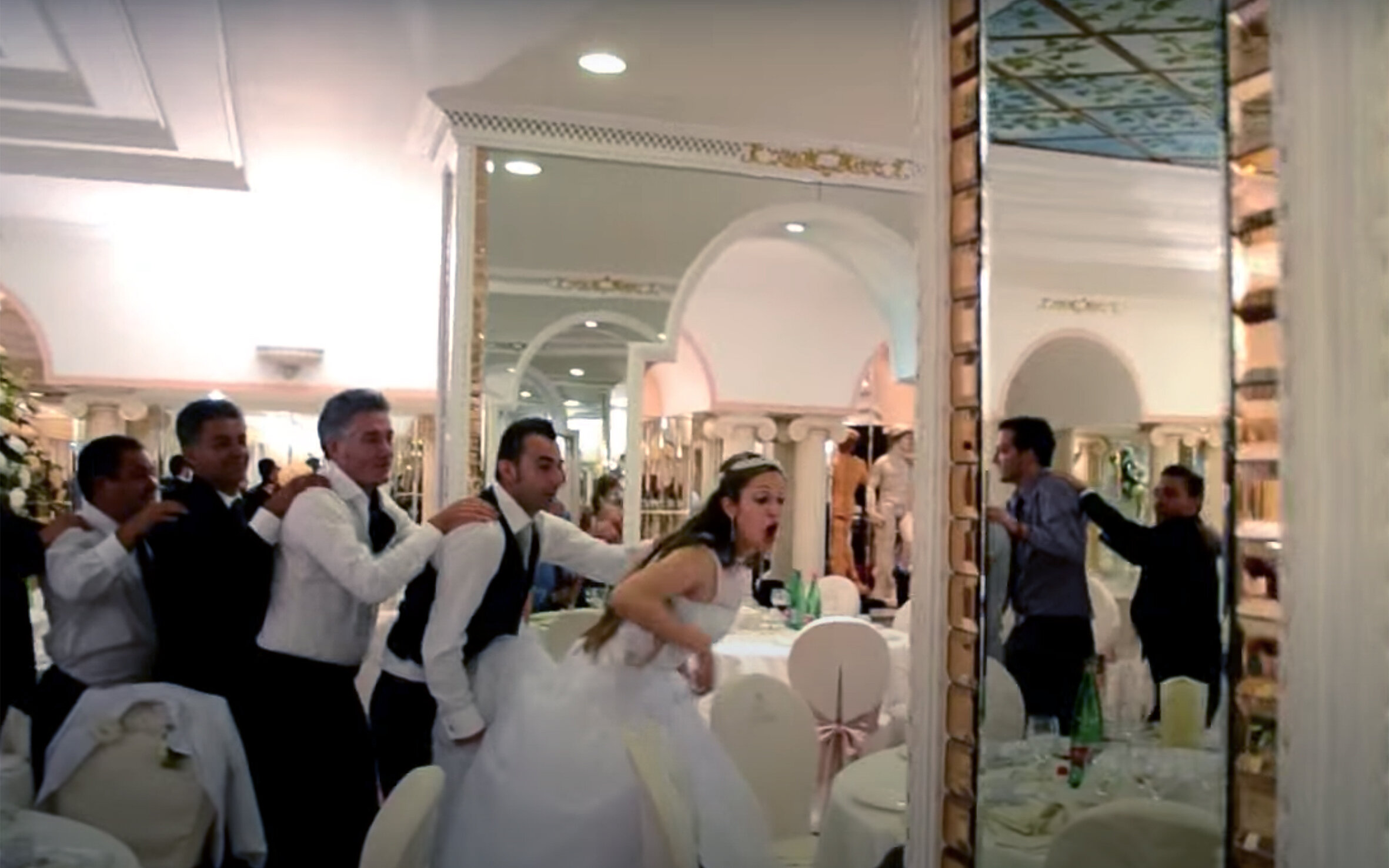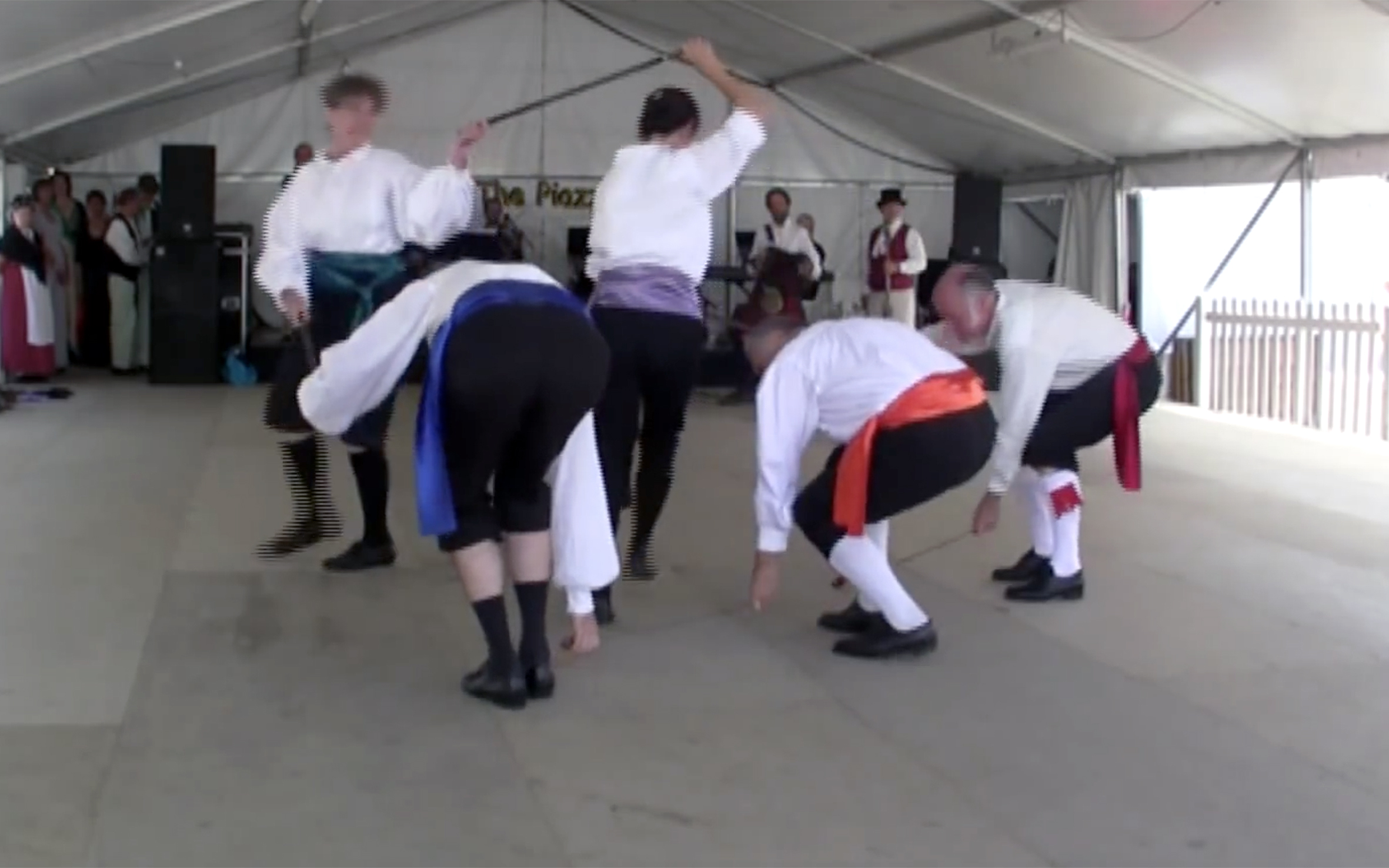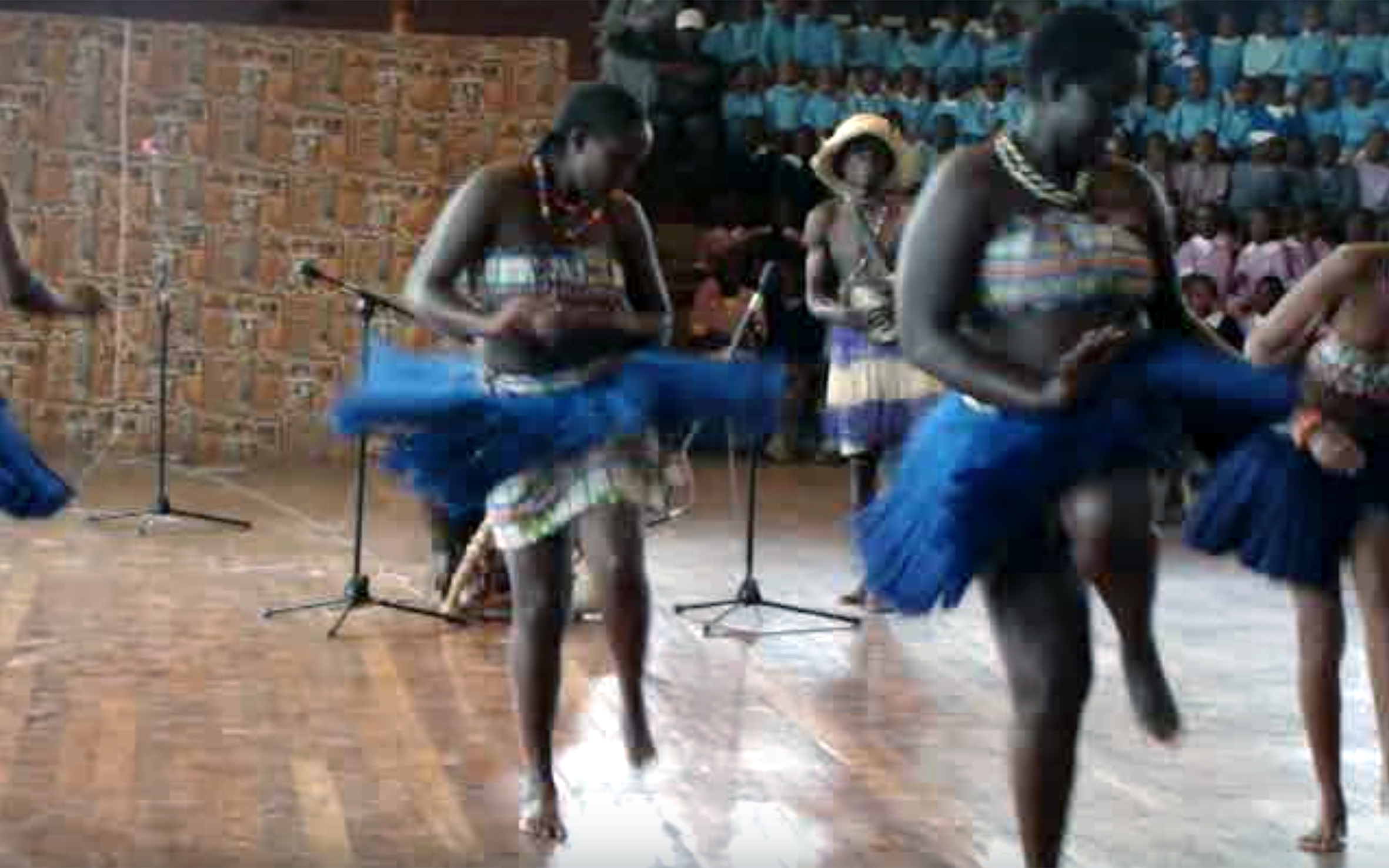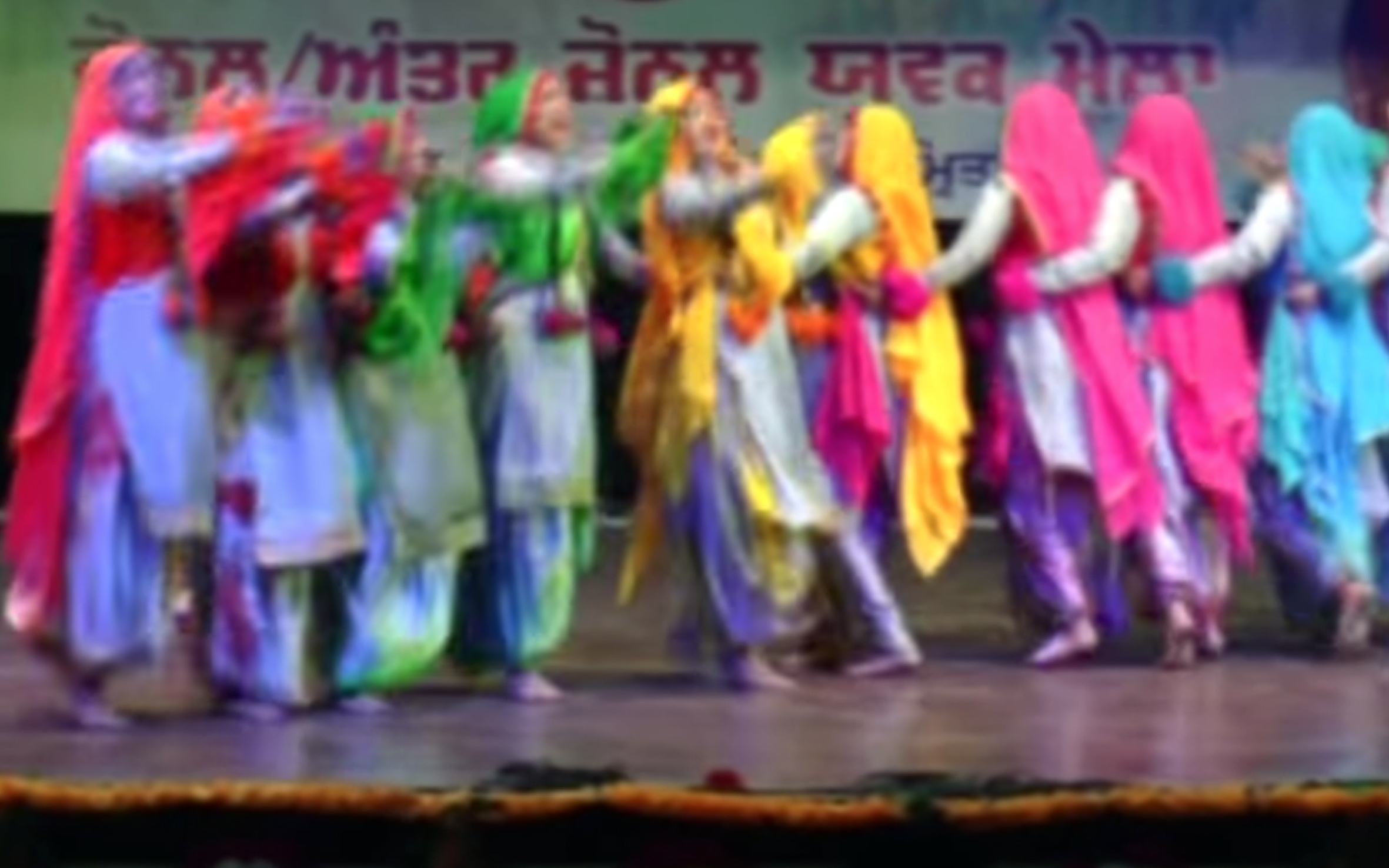519.La baila de IBIo / Spain
LA BAILA DE IBIO is a traditional folklore dance from the Cantabria region in Spain and one of the most popular manifestations of its culture. It originated as a warrior dance from Ruiloba and it was later modified by Matilde de la Torre, founder of the group Voces Cántabras in 1931, and presented at the annual festival of the English Society of Folk Dances. Currently it is performed at many festivities in the region, and in particular, during the celebration of the San Pantaleón festivities, on July 27th in Ibio.
520.LA Bamba / Mexico / Latin America
LA BAMBA is a popular song of Mexican origin that is well known across Latin America. It is usually danced at family reunions. It also gained popularity around the world.
521.LACCIO D’AMORE / Italy
LACCIO D’AMORE is an ancient traditional Maypole-type of dance from Penna Sant’Andrea in Abruzzi, usually performed by twelve couples. The dance has several parts beginning with men and women going in a procession with the pole, which is followed by a Saltarello-style dance by the couples and then a round dance where the men (unsuccessfully) court the women. A circle is formed around the pole and the dancers take the colored ribbons and dance a weaving figure. The ritual ends with a leave-taking dance. In the modern version, a polka precedes the weaving figure.
522.Laho / India
LAHO is a unique folk dance from the northeastern Indian state of Meghalaya, performed by the Pnar tribe. It is danced by men and women dressed in traditional colourful costumes especially during the Behdienkhlam festival, which is a celebration for the prosperity and wellbeing of the people of Meghalaya. In the dance, a woman links her arms with two men on either side and together they perform synchronous steps. The trio symbolically represents religion, economy and society of the Pnars. A solo female dancer leads the groups and symbolises the chief priestess. The rhythm of the dance is provided not by musical instruments but by a man reciting ribald poetry.
523.Lakhon / Thailand
LAKHON is a theatre in Thailand, composed of many different genres. There are three main categories: classical, folk, and modern. Many forms of theatre in Thailand incorporate dance movement into performances and are referred to as dance dramas. Thai theatre was strongly influenced by the Siamese theatrical arts during the early 19th century. Lakhon features a wide range of stories, including folk tales and Jataka stories. Dancers are usually female and they perform as a group rather than representing individual characters.
524.Lambadi / India
LAMBADI is a folk dance of the Banjara community of Andhra Pradesh. It is mainly performed by tribal women who bedeck themselves in colourful costumes and jewellery. They dance in tune with the male drummers to praise gods for a good harvest.
525.Lam lao / Laos
LAM LAO is a general name for the Lao folk music. It is also a name for a lao performance to Lam Lao music. The music that accompanies a lam lao performance includes various types of percussion, fiddles, lutes, xylophones or oboes. Lyrics are drawn from old poetry, classical stories or improvised according to the complicated tonal rhyming patterns of the verse. They can range from topics as serious as religious sermons and Jataka tales to sometimes such themes as love and sex. Performances are not necessarily theatrical. They show exchanges of witty repartées in alternating verses or songs between a male and a female who pretend to fall in love before departing, or between friends who try to outwit each other. The songs are interspersed with dance numbers, comedic routines, acting, and teasing between the performers and the audience.
526.lap dance / global
LAP DANCE is a type of erotic dance performance offered in some strip clubs in which the dancer typically has body contact with a seated patron. Lap dancing is different from table dancing, in which the dancer is close to a seated patron, but without body contact. With lap dancing, the dancer may be nude, topless, or scantily dressed, depending on the laws of the jurisdiction and the club's policies. Also depending on the local law and community standards lap dance can involve touching of the dancer by the patron, touching the patron by the dancer, neither, or both. In some clubs, any touching by the patron is forbidden. A lap dance is often ordered as entertainment at bachelor or bachelorette parties.
527.Latvian folk DANCE / Latvia
LATVIAN FOLK DANCE originates from the traditions of the Baltic tribes that arrived in the Baltic region approx. 2000 BC. Dances portray the day-to-day life of rural communities (sowing, harvesting, fishing), as well as specific events (courtship, marriage, birth), and reflect the surroundings important to Baltic culture (animals, birds, nature in general, the changes of the seasons). Over time, these folk dances were formalized into choreographed presentations based on traditional dance patterns. Dancers wear wool and linen folk costumes chosen to represent specific areas of Latvia where a dancer’s family has its origins. The decorative elements incorporate the signs of ancient, pre- Christianity deities. Most dances are performed with a partner in four or more couple formations. Steps are based on variations of the polka and gallop.
528.LA VALljA / albania / Italy
LA VALLJA is a dance of the Albanian ethnic group in Calabria done in a single circle with men and women holding hands, belts or in a basket weave hold. It may be danced in two circles, one of men and one of women. The dance is accompanied by songs about the Albanian national hero Scanderbeg.
529.Lavani / India
LAVANI is a combination of traditional song and dance from Maharashtra in India, which is performed to the beats of a percussion instrument called Dholki, and noted for its powerful rhythm. It has contributed substantially to the development of Marathi folk theatre. It is performed by female performers wearing nine-yard long saris. The songs are sung at a quick tempo. Traditionally, this genre of folk dance deals with different and varied subject matters such as society, religion and politics. The songs in Lavani are mostly erotic in sentiment and the dialogues tend to be pungent in socio-political satire.
530.Ländler / Germany / Austria / Switzerland / Italy / Slovenia
LÄNDLER also called ZILLERTALER is a folk dance that was popular in Austria, south Germany, German Switzerland, and Slovenia at the end of the 18th century. It is a couple dance that strongly features hopping and stamping. Sometimes it was purely instrumental, sometimes had a vocal part, and sometimes it featured yodelling. When dance halls became popular in Europe in the 19th century, the dance was made quicker and more elegant, and the men shed the hobnail boots that they wore to dance. Along with a number of other folk dances from Germany and Bohemia, it is thought to have contributed to the evolution of the waltz. The Broadway musical, later turned into film, “The Sound of Music”, and the 2013 TV special, “The Sound of Music Live!”, feature a scene where the protagonists Maria and Captain von Trapp dance a Ländler.
531.Legényes / Hungary / Romania
LEGÉNYES is a male solo dance done by Transylvanian people (both ethnic Hungarian and Romanian), particularly in the Cluj region. Although It is usually considered a dance for young men, it can be danced also by older men. It is performed freestyle usually by one dancer at a time in front of the band. Women participate in the dance by standing in lines to the side and singing/shouting verses while the men dance. Each dancer does a number of points (dance phrases) typically 4 to 8 without repetition. Each point consists of 4 parts, each lasting 4 counts. The first part is usually the same for everyone, with only a few variations.
532.Les Lanciers / Denmark
LES LANCIERS is a square dance, a variant of the quadrille, performed by four couples. It is a composite dance made up of five figures, each performed four times so that each couple dances the lead part. It exists in many variants in several countries. Widespread throughout Europe, it became less fashionable by the beginning of the 20th century. Introduced from England in 1860, it has stayed a popular dance in Denmark to the present day. From the bourgeoisie of Copenhagen through dancing schools it has spread to provincial towns. Now considered a Danish folk dance, it is danced all over the country at many universities and countless private functions. It is also taught in most of the high schools in Denmark, where it is often performed at the school galas.
533.LETKAJENKKA / Finland
LETKAJENKKA is a Finnish group dance that was especially popular in the 1960s and has also spread around the world. It is danced in a Conga-like line, with the participants holding the person in front of them by the waist or shoulders. The footwork is similar to Bunny Hop, a novelty American dance of the 1950s, except that it starts by extending the left foot instead of the right. The basic steps go as follows: point left heel to the side twice, point right heel to the side twice, then jump straight forward with both feet, jump back with both feet, and jump forward with both feet three times. A version as a couple dance also exists. The music is consistent with traditional Jenkka but performed using non-traditional instruments.
534.Lezginka / Azerbaijan
LEZGINKA is a folk dance of the Northeast Caucasian ethnic group called Lezghins, native predominantly to southern Dagestan and to northeastern Azerbaijan. It is a male solo dance (often with a sword) and also a couple dance. The man, imitating the eagle, falls to his knees, leaps up, and dances with concise steps and strong, sharp arm and body movements. When the dance is performed in pairs, couples do not touch. The woman dances quietly as she regards the man’s display.
535.Liigo dance / Latvia
LIIGO is a dance performed during the summer solstice celebrations in Latvia, happening on the night from June 23th to June 24th, called “Liigo” or “Ja¯n¸i”. On that night people participate in joyous festivities just as their ancestors did centuries ago. Ideally celebrating in nature, making garlands of oak leaves or wildflowers, going to the sauna, drinking beer, and devouring copious amounts of caraway cheese, they also sing-along and dance. Ja¯n¸i was originally a festival for pagan farmers that existed long before the arrival of Christianity and the traditions of the festival remain immensely popular to this day.
536.Limbo Dance / Trinidad and Tobago / Global
LIMBO DANCE, also called the UNDER THE STICK DANCE, was a ritual dance performed at African wakes. It became popular in Trinidad in the late 19th century. It is believed to be a recreation of going down on a slave ship. Slave ships were very narrow and had low ceilings, therefore slaves needed to have the flexibility to navigate through them. Limbo dance involves a dancer moving to a rhythmic beat and dancing under a stick. All contestants attempt to go under it with their backs facing the floor. They cannot knock the stick over or touch it with their body. This step is repeated with the stick being lowered one notch each time. This continues with all dancers until there is just one left who has not touched the stick, fallen or laid on the floor.
537.Lindjo / Croatia
LINDJO is the most popular dance of the Dubrovnik coastal region in Croatia. It is danced to the accompaniment of lijerica (an old South Dalmatian instrument with three strings). It is extensively performed in the Dubrovnik region, in Konavle area, in Dubrovacˇko Primorje on the Pelješac Peninsula and on the islands of Mljet and Lastovo, as well as parts of Herzegovina. The dance master plays sitting, with lijerica on his left knee, while stamping with his right foot, thus dictating rhythm to the dancers. They move in a circle around the dance master, who gives commands (in rhyme, humorous and often with double meaning). He also decides who will dance with whom and dictates the change of dance figures, along with encouraging the dancers to compete in improvisations.
538.LINDY HOP / USA / Global
LINDY HOP is a dance born in Harlem, New York City in 1928. It has evolved with the jazz music and was very popular during the Swing era, being a fusion of many dances that preceded it or were popular during its development. It is based mainly on jazz, tap, breakaway, and Charleston, combining elements of both partnered and solo dancing with the movements and improvisation of African-American dances, along with the formal eightcount structure of European partner dances. In the open position, each dancer is connected hand-to-hand, and in the closed position, leads and follows are connected as though in an embrace on one side and holding hands on the other. In the 1980s with dancers and loosely affiliated grass-roots organizations in North America, South America, Europe, Asia, and Oceania the dance gained popularity again.
539.LINE DANCE / Global
LINE DANCE is a choreographed dance with a repeated sequence of steps in which a group of people dance in one or more lines or rows, all facing either each other or in the same direction, and executing the steps at the same time. Each dance consists of a sequence of steps that are repeated throughout the music. Although a variety of music may be used, the major emphasis is on country and western music. Line dancing is practiced and learned in countrywestern dance bars, social clubs, dance clubs and ballrooms. It is sometimes combined on dance programs with other forms of country-western dance, such as two-step, western promenade dances, as well as with western-style variants of the waltz, polka and swing.
540.Lion Dance / China
LION DANCE is a form of traditional dance in Chinese culture and other Asian countries in which performers mimic a lion’s movements in a lion costume to bring good luck and fortune. It is usually performed during the Chinese New Year and other Chinese traditional, cultural and religious festivals. It may be performed at important occasions such as business opening events or wedding ceremonies, or may be used to honour special guests. It has two main forms: the Northern Lion and the Southern Lion, both commonly found in China. Around the world especially in South East Asia, the Southern Lion predominates. Versions of the lion dance are also found in Japan, Korea, Tibet and Vietnam. Another form exists in Indonesia, but it may be of a different tradition and is referred to as Singa Barong.
541.LIQUID / USA
LIQUID is the most famous and practiced style of Gangsta Walking. It takes bits and pieces from other street dance styles such as liquid dancing, robot, locking, popping, gliding and even breakdancing all merged with the traditional dance. The most recognisable motions are of the dancers doing moves similar to the two-step between making another motion and spinning or walking on the tips of their toes. This style of the Gangsta Walk is mostly done by the younger generation and the generation behind them who grew up shortly after the invention of Buck music.
542.LIQUID AND DIGITS / USA
LIQUID AND DIGITS is a type of gestural, interpretive, rave and urban street dance that sometimes involves aspects of pantomime. The term invokes the word “liquid” to describe the fluid like motion of the dancer’s body and appendages, and “digits” to refer to illusions constructed with the dancer’s fingers. Liquid dancing has many moves in common with popping and waving. The exact origins of the dance are uncertain, although they came out of either popping, raves or both sometime from the 1970s to 1990s. The dance is typically done to a variety of electronic dance music from trance to drum and bass to glitch hop, depending on the dancer’s musical taste.
543.Liscio / Italy
LISCIO is a folk couple dance originating from the northern Italian region of Romagna at the end of the 19th century. It later became popular and spread to the rest of the country. It is a combination of three dances: Mazurka, Waltz, Polka. Liscio’s name, meaning “smooth”, derives from the dancers’ practice of “moving smoothly”, or sliding their feet. The music is traditionally performed by solo instruments such as clarinet, saxophone and accordion accompanied by bass, guitar and drums. Over the years, a singer was added to the instrumental form. Liscio is still danced especially during summer folk festivals.
544.Litolobonya / Lesotho
LITOLOBONYA, which translates to “old clothes”, is one of several Basotho dances performed by women in Lesotho. Only married women and mothers can attend this dance in the village. Women historically used to perform the dance a few months after childbirth to confirm their core was strong enough to return to the physically demanding Basotho woman’s role, including carrying water on her head.
545.LITURGICAL DANCE / Global
LITURGICAL DANCE is a type of dance movement sometimes incorporated into liturgies or worship services as an expression of worship. Some liturgical dances were common in ancient times or non-western settings, with precedents in the Hebrew religion and accounts of dancing in the Old Testament. Created first by the Protestants, they became popular in other parts of the Christian Church.
546.Leekspin Dance / Global
LEEKSPIN DANCE called also LOITUMA GIRL DANCE is a dance coming from a Flash animation, set to a scat singing section of the traditional Finnish folk song “Ievan Polkka”, sung by the Finnish quartet Loituma on their debut album in 1995. It appeared on the Internet in late April 2006 and quickly became popular. The animation consists of six frames showing the Bleach anime character Orihime Inoue twirling a leek, set to a 27-second loop from the song. The animation is taken from episode two of the Bleach anime series. In July 2006, the Finnish newspaper reported that Loituma Girl had caused a resurgence in Loituma’s popularity, and the band had received thousands of fan letters from around the world.
547.Locomotive / Global
LOCOMOTIVE is a funny dance, often performed at special occasions such as weddings or various celebrations. People mostly dance it to specific songs with lyrics about locomotives, but it is not necessary. It is danced in line with people holding each other’s hips and imitating the train and its movement. Locomotive dance is performed in many countries around the globe, in particular in the Czech Republic and Poland.
548.LOCKING / USA / Global
LOCKING is a style of funk dance, originally called Campbellocking, created in 1969 in Los Angeles, California by Don “Campbellock” Campbell and popularized by his crew The Lockers. The dancing is characterized by frequently locking in place and moving again after a brief freeze. It relies on the fast and distinct arm and hand movements combined with more relaxed hips and legs. The movements are generally exaggerated and often very rhythmic, tightly synced with the music. Locking is quite performance oriented, often interacting with the audience, originally danced to traditional funk music, such as James Brown. It includes quite a lot of acrobatics and physically demanding moves, such as landing on one’s knees and the split. This improvisational dance may be danced solo or in unison with more dancers doing steps or handshakes together.
549.LOGOBI / Ivory Coast
LOGOBI is an urban musical genre that accompanies certain dance moves. It first appeared in Côte d’Ivoire in 1986 and was popularized initially at university campuses in Abidjan. With time it became an international dance trend that has spread to other African countries and eventually to continental Europe. The dance is based on traditional Zouglou dance from Ivory Coast with new elements added. Zouglou and Logobi can be used interchangeably, although Zouglou is more ancient and Logobi is a more modern dance development.
550.Loncomeo / Chile
LONCOMEO is a traditional music and dance style of the Tehuelche and Mapuche people in Patagonia. Its name, meaning “to move the head”, refers to the dance’s most distinctive feature, in which the dancers shake their heads vigorously without losing the rhythm. The dance has an exclusively male character and imitates the movements of rhea. It is typically danced by a group of six half-naked and barefoot men, the first five of whom have their heads decorated with feathers and the last one represents the tail. Loncomeo is usually associated with the spiritual ceremonies and is performed to the sound of the kultrún drum.
551.London Karape / Paraguay
LONDON KARAPE is a traditional dance, originated in the second half of the 19th century probably from London, that came to Paraguay around 1860. It is similar to Contradanza. Local people took the basics of its choreography and adapted it to their popular taste. London Karape has its own music, with a lively and happy rhythm, and consists of two sections. It is still popular today and there are two known versions of its music and choreography.
552.Longsword Dance / England
LONG SWORD DANCE is a hilt-and-point sword dance found mainly in Yorkshire, England. It is usually performed around Christmas time and is believed to derive from a rite performed to enable a fruitful harvest.
553.LUO DANCES / Kenya
LUO DANCES are elegant and graceful dances performed by the Lou people from Kenya, accompanied by folk music. They involve either the movement of one leg in the opposite direction with the waist in step with the syncopated beats of the music or the shaking of the shoulders vigorously, usually to the tune of the nyatiti, an eight-stringed instrument.
554.Loudou / Central African Republic
LOUDOU is a traditional dance performed by the population living in the forest areas, hailing from the region of Lobaye in the southwest of the Central African Republic. It is performed by the Mbaka and the Mbati, who belong to the ethnic group of Bantu, during the dry season to celebrate the harvest of the caterpillar. The band Zokela, an icon of modern and traditional music in the Central African Republic, popularized this dance throughout the whole country in the early 1980s.
555.Luddi / India / Pakistan
LUDDI is a victory dance from the Punjab region of India and Pakistan. The dancers place one hand at the back and the other before the face imitating the movement of a snake’s head. It is danced with a drummer in the centre and sometimes before a throng of people moving forward. Luddi dance is more popular across the Sutlej and in Pakistan, where it is almost as popular as the Bhangra. It is a dance of historical background that pertains to the moment when Punjabi Sardars used to rescue Indian women that were forcibly taken in the direction of Basra in the Middle East.
556.Luganda / Uganda
LUGANDA is a traditional dance from Uganda.
557.LURISH DANCE / Iran
LURISH DANCE includes a range of folk dances that have been passed from generation to generation. Generally, it features common Iranian dance, including group, circular arrangements, and colorful costumes, accompanied by distinctive music. The Lurish people live mostly in western and southwestern Iran. Their dance styles include a wide range of folklore, among them: Cˇ u-bâzi (Twig dance) performed in the celebrations, inspired by the heroic battles, danced by two men or sometimes by women, who hold sticks, one as a defender, and the other as an attacker who has to attack the opponent only below the level of the knee; and cheerful Dasmâl-bâzi (Handkerchief dance) danced mostly among the Bakhtiari and southern Lures, a dominant dance at the weddings, performed by women and men, holding two colorful handkerchiefs.










